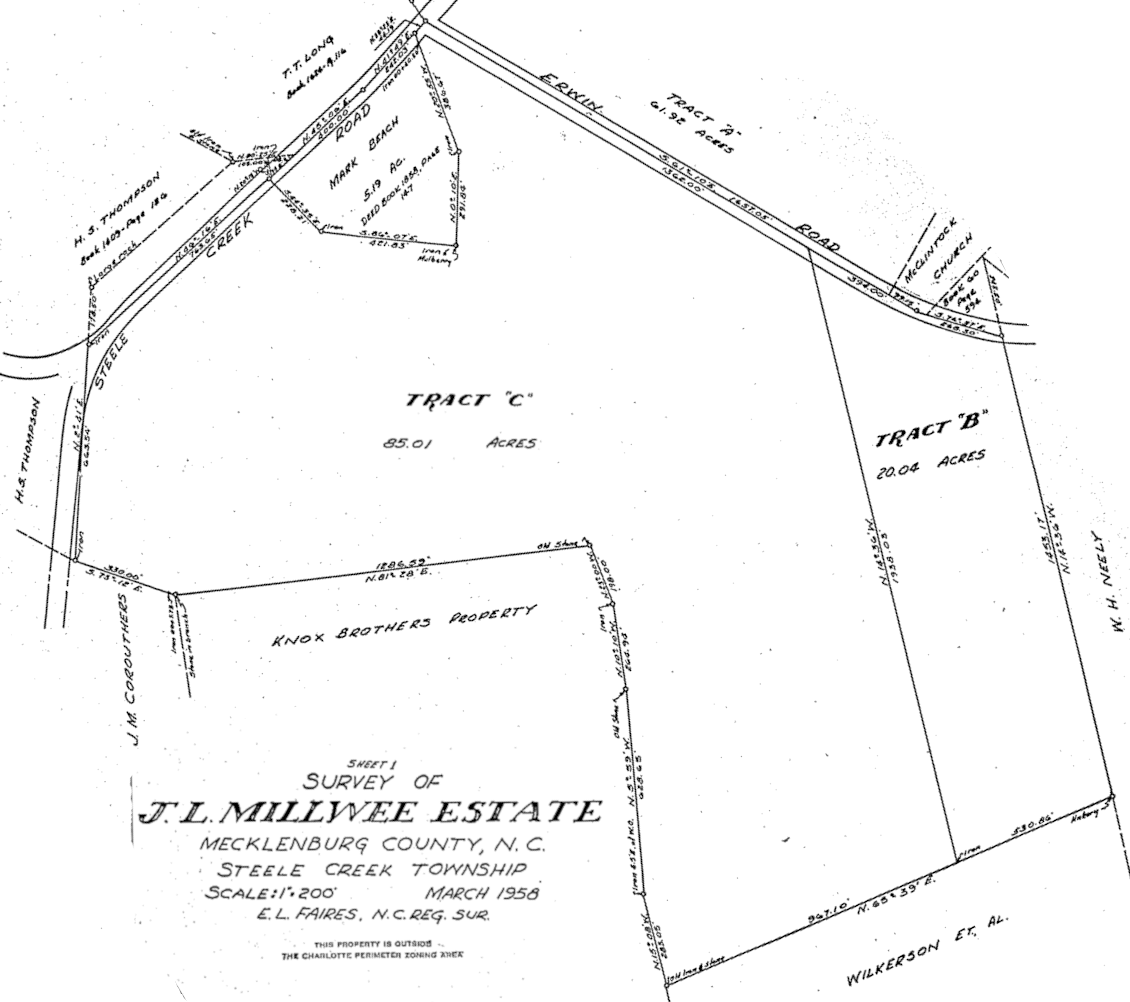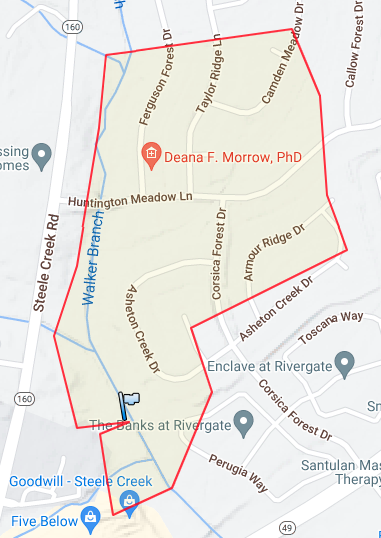Ed. note - This is the transcription of a memo written to President Kennedy that explores the CIA's bureaucracy, explains its cultural problems, and suggests organizational reforms. It is dated June 30, 1961, not long after the infamous Bay of Pigs invasion in April of 1961. The author, Arthur M. Schlesinger Jr., was a "roving reporter" who reported directly to the President. This is a candid and well-written memo. Given Schlesinger's history with the CIA and his broad access to the entire executive branch I believe he paints an accurate picture.
Ultimately, the reforms suggested by Schlesinger did not happen. There was no dismemberment of the CIA's operational responsibilities, there appears to be no subjugation of the CIA to the State Department, and the Reagan-era creation of the Intelligence Community centralized intelligence coordination under the CIA instead of a pluralistic Joint Intelligence Board.
Memorandum for the President
Subject: CIA Reorganization
I submit the following views as one who worked in OSS during the war and served as a periodic CIA consultant in the years since.
On balance, CIA's record has probably been very good. In the nature of clandestine operations the triumphs of an intelligence agency are unknown[1], all the public hears about (or should hear about) are its errors. But, again in the nature of the case, an agency dedicated to clandestine activity can afford damned few visible errors. The important thing to recognize today, in my judgment, is that the CIA, as at present named and constituted, has about used up its quota. Its margin for future error is practically non-existent. One more CIA debacle will shake faith considerably in US policy, at home as well as abroad. And, until CIA is visibly reorganized, it will (as in the Algerian instance) be widely blamed for developments of which it is wholly innocent.
The argument of this memorandum is that CIA's trouble can be traced to the autonomy with which the agency has been permitted to operate and that this autonomy is due to three main causes: (1) an inadequate doctrine of clandestine operations; (2) an inadequate conception of the relationship between operations and policy; (3) an inadequate conception of the relationship between operations and intelligence. The memorandum also suggests ways in which some of these problems can perhaps be alleviated.
I. CIA Autonomy
CIA conduct three main forms of secret work: clandestine intelligence collection; covert political operations; and paramilitary activities. It carries on these functions with relative autonomy. The reasons for the autonomy are historical.
When CIA began, the State Department, still thinking too much in terms of its traditional missions in foreign affairs, looked on this new venture with suspicion and renounced the opportunity to seize firm control of CIA operations. It did not, for example, try to establish any effective system of clearance for CIA activities; and some ambassadors frankly preferred not to know what CIA was up to in their countries. After 1953 the fact that the Secretary of State and the Director of Central Intelligence were brothers further confirmed CIA's independence from supervision by State Department desks.
In the meantime, CIA grew in size and power. During the fifties it began in some areas to outstrip the State Department in the quality of its personnel. Partly because CIA paid higher salaries and even more perhaps because Allen Dulles gave his people courageous protection against McCarthyite attacks, CIA was able to attract and hold a large number of able and independent-minded men. The more it added brilliant activists to its staff, the more momentum its operation developed, and the greater role it played in the initiation of policy.
By the time that State had begun to be fully aware of the problems created by an active and autonomous CIA, it had long since missed the chance to establish its own ultimate authority. While State retained a nominal supervision over covert political operations, this was to some degree offset by CIA's tendency to present a proposed operation almost as a fait accompli; State never had title to control overt clandestine intelligence collection; and it had lost ground in such areas as overt political reporting and even in the maintenance of overt diplomatic contacts.
For its part, CIA had developed a whole series of functions paralleling already existing function of the State Department, and of the Defense Department as well. Today it has its own political desks and military staffs; it has in effect its own foreign service; it has (or had) its own combat forces; it even has its own air force. Its annual budget is about __ times that of the State Department. The contemporary CIA possesses many of the characteristics of a state within a state.
II. Doctrine
Though CIA's autonomy developed for historical reasons, it has been able to endure because there is no doctrine governing our conduct of clandestine operations. The problem of doctrine for CIA is the extent to which its various clandestine mission are compatible with a free and open society.
It is idle to argue that, because the Communists can do such-and-such, we are free to do it too. Communism ie a creed nurtured in conspiracy; and the whole point of Communist social and political organization is to make conspiracy effective. If 'fighting fire with fire' means contracting the freedoms traditionally enjoyed by Americans in order to give more freedom to CIA, no one seriously wishes to do that. Yet I do not feel that we have tried rigorously to think through the limits which the maintenance of an open society places on secret activity. Until this is done, CIA'a role will not be clearly defined and understood. The problem which must be faced is: what sort of secret activity is consistent with the preservation of a free social order?
We must begin, I believe, by accepting the fact that the United States will continue to be a nation in which politicians will ask questions and make speeches, reporters will dig out stories, newspapers will publish editorials, individuals, driven by promptings of conscience, will blurt out things harmful to the state, and so on. We do not wish to change these things and could not do so without violating the essence of our society. These things make up the framework in which CIA must operate. In short, they constitute the problem; and, as General Marshall used to say, "There's no point in fighting the problem."
There follows from [unreadable], I would think, the conclusion that secret activities are permissible so long as they do not corrupt the principles and practices of our society, and that they cease to be permissible when their effect is to corrupt those principles and practices.
Each form of secret activity presents its own problem. Clandestine intelligence collection has been a traditional function of the national state. Its rules and usages are fairly well established. In the main, espionage, if conducted with discretion, should present no great problem. However, when conducted with an open checkbook and a broad mandate even espionage can begin to push against the limits of secret activity in an open society. I consider later, for example, the question of the Controlled American Source (CAS) and whether the overdoing of CAS is not beginning to harm other [unreadable] of the government.
Covert political operations present a trickier problem. Occasions arise when it is necessary to subsidize newspapers, politicians and organizations in other countries. But corruption of the political life of another nation is not a responsibility to be lightly assumed. I wonder whether CIA has not done too much of this for the joy of it. Paramilitary activities create an even more difficult problem, if only because the problems of concealment are so much more difficult.
In general, I would suggest that any secret operation whose success is dependent on the suppression of news, on lying to Congressmen and journalists and on the deception of the electorate should be undertaken only when the crisis is so considerable that the gains really seem to outweigh the disadvantages. This suggests that the size of the proposed operation may be of crucial importance. Small operations can be done with a minimum of accompanying corruption. The greater the visibility of the operation, and more its success depends on thwarting the impulses and denying the values of an open society, the riskier it becomes, and the more urgent it is that an overwhelming case be made for its necessity.
In short, when confronted with a proposed operation, we must not only ask whether the operation is technically feasible in its own terms; we must ask whether its success requires our open society to be [unreadable] serious way false to its own principles.
III. Operations and Policy
Clandestine activities should be assessed not only to the context of their relationship to an open society but also in the context of their relationship to United States foreign policy.
CIA operations have not been held effectively subordinate to U.S. foreign policy.
1. Clandestine intelligence collection is, by charter, free from State Department control. This fact exposes American foreign policy to a multitude of embarrassments when CIA is discovered recruiting agents or developing sources in a friendly country. The recent Singapore case, when CIA, without notice to the Consul General, tried to subvert a member of the Special Branch of the Singapore Police provides an instructive example. After complications of ludicrous complexity, including an attempt to subject the recruit to a lie-detector test, it turned out that the recruit had long since informed his superiors of the CIA approach and was leading CIA into a trap, which, when sprung, produced considerable embarrassment to relations between the US and the Singapore government. There have been troubles of a comparable sort in Pakistan and in Japan (where a group of Chinese Nationals were smuggled into Sasebo[?] to work in a CIA-NSA operation).
CIA has said that, in such cases, neither the Embassy nor the Department in Washington is normally informed of this type of operation. In short, no one knows how many potential problems for US foreign policy -- and how much potential friction with friendly states -- are being created at this moment by CIA clandestine intelligence operations. Surely there is an argument for permitting State to decide whether the advantage to be gained by the operation (e.g. the information derivable from an agent within the Special Branch of the Singapore Police) outweighs the risk (e.g. exasperating the local government and shaking its confidence both in our purposes and in our sense). Clandestine intelligence operations should plainly be cleared both with the Department of State (and save for exceptional instances and on agreement of the Secretary of State) with the local U.S. Ambassador.
2. Covert political operations technically require State Department clearance. In practice, however, CIA has often been able to seize the initiative in ways which reduce State's role almost to that of a rubber stamp.
This has been partly the consequence of the superior drive and activism of CIA personnel, especially as compared with the diffidence of State Department personnel. For example, when men come to CIA with the assignment of developing covert political campaigns or organizing coups or preparing for paramilitary warfare, these men naturally fall to work with ingenuity and zeal; they probably feel that they are not earning their pay unless, say, they organize as many coups as possible. The concept of 'contingency planning' has legitimatized the concrete preparation of operations still presumably in a hypothetical stage; people did not at first notice that 'contingency planning,' when carried to the stage of recruitment and training of personnel, creates a vested interest which often transforms contingencies into apparent necessities. Thus, if a group is assembled and revved up on a contingency basis, then the failure to carry the project through (it is argued) will invite the disappointment and alienation of the group; so the pressure increases to follow through on what had started as a pure speculation. This was a central factor, of course, in the Cuban decision -- the fact that disbandment of the Cuban force in Guatemala just seemed to create too many problems and embarrassments. Having entered into relations with personalities in foreign lands, CIA has sometimes seemed to feel that we must thereafter do pretty much what they want -- or else they will blow security or even go over to the Communists. This approach has made us on occasion the prisoners of our own agents.[2]
It has meant too [unreadable] State Department, often apprised of an operation only in its later stages, is under great pressure to endorse the operation as already mounted because of the alleged evil consequences [unreadable] exercising a veto. I well remember Tom Mann's remark the day the decision was made to go ahead on Cuba: "I would never have favored imitating this operation; but, since it has gone as far as it has, I do not think we can risk calling it off." Moreover, at a time when there is increasing premium on activism, State, when it questions CIA operations or initiatives, casts itself in a prissy, sissy, negative role. The advocate of clandestine activities seems 'tough' and realistic; the opponent has to invoke such intangibles as the reputation of the United States, world public opinion, "What do we say in the United Nations?", etc., and seems hopelessly idealistic, legalistic and 'soft.'
The result of CIA's initiative in covert political operations has been to create situations which have forced policy on the State Department. This was not the original idea behind CIA. As Allen Dulles wrote in his 1947 memorandum to the Senate Armed Services Committee, "The Central Intelligence Agency should have nothing to do with policy." Yet, in the years since, CIA has, in effect, 'made' policy in many parts of the world. A number of governments still in power know that they even been targets of CIA attempts at overthrow -- not a state of mind calculated to stimulate friendly feelings towards the United States. Indonesia, of course, is a prime example.
This experience suggests that the present system by which CIA notifies State of a projected covert operation is inadequate to protect US interests. There must be some means by which State can be informed of such operations at an early enough stage to affect the conception and preliminary planning of the operation. Otherwise CIA will continue to confront State with propositions having potential impact on foreign policy but at too late a point to subject that impact to reasonable control.
3. The Controlled American Source (CAS) represents a particular aspect of CIA's encroachment on policy-making functions. [The rest of the section is redacted.]
4. Paramilitary warfare, I gather, is regarded in some quarters as a purely technical matter, easily detachable from policy and therefore a proper function of the Department of Defense. Yet there is almost no CIA function more peculiarly dependent on the political context than paramilitary warfare.
There are several reasons for this. For one thing, a paramilitary operation is in its nature a large and attributable operation and thereby, as suggested above, clashes with with the presupposition of our open society. (These considerations need not apply, however, to the training of, say the South Vietnamese in guerrilla tactics or to the support of already existing guerrilla activities.) For another, the moral and political price of direct paramilitary failure is acute for us. Communists, when they stimulate paramilitary activity, are doing what the world expects from them; when we do it we appear to betray our own professed principles and therefore cannot afford to compound delinquency by defeat. Moreover, as the recent Algerian episode showed, once we convince the world that ws are committed to a paramilitary endeavor, we will be blamed for all sorts of things. And, as the recent tractors-for-prisoners episode showed, when we do send men to possible death, we cannot lightly write them off and close the books. The Communists, on the other hand, have no scruples about liquidating a losing show.
Moreover, guerrilla warfare is fought, much more than military men ordinarily realize, in an ideological context. The guerrilla succeeds when his program enlists grassroots support; and it is very difficult indeed to beat him when the countryside is with him. Van Mook told General Marshall in 1946 not to worry about the guerrillas in Indonesia; "we are sending 50,000 men out there and will clean the situation up in the three months." Marshall, who had had experience fighting guerrillas in the Philippines, replied "It won't be so easy. You will find that they will bleed you to death." Cyprus and Algeria illustrate the difficulty of overcoming guerrilla resistance through sheer weight of military force.
Serious guerrilla movements hare been defeated only three times since the end of the Second World War: in Greece, because Tito's defection closed the northern border; in the Philippines; and in Malaya. In the last two cases the guerrilla resistance ended because of the combination of political and military countermeasures. The struggle in Malaya, as Field Marshal Templer understood (and said), was for the minds and hearts of the people; it therefore involved not only paramilitary operations but a vast educational program, organization of trade unions, political reform and an offer of national independence. If the guerrilla's power lies in his revolutionary program, the answer lies In part in meeting the needs which enable the guerrilla to rouse the countryside. "Without a political goal," wrote Mao Tse-tung, "guerrilla warfare must fail, as it must if its political objectives do not coincide with the aspirations of the people and if their sympathy, cooperation and assistance cannot be gained." He added, "Do we want the support of the masses? If we do, we must go among the masses; arouse them to activity; concern ourselves with their [unreadable] and woe."
For these reasons, paramilitary warfare cannot be considered as primarily a military weapon. It is primarily a political weapon and must therefore be subjected to close and careful political oversight. It probably should be retained in a reconstituted CIA rather than transferred to Defense.
5. How to Establish Policy Control? Here I wonder whether the British experience might not be of value. The notable feature of the British Intelligence system is the determination to keep clandestine activity under strict Foreign Office control. This control is achieved in a number of ways:
a) Secret Intelligence Service (MI-6) itself operates under the direction of the Joint Intelligence Committee, which has a Foreign Office chairman (until recently Sir Patrick Dean, who is now the British representative at the UN) and which includes the Service Intelligence directors and representatives of the Colonial Office and the Commonwealth Relations Office as as the Chief of [unreadable].
b) basic political warfare directives are originated, not by SIS, but by the Information Research Department in the Foreign Office, often in consultation with an interdepartmental Working Group on International Communist Fronts, and under the ultimate control of the Superintending Under-Secretary of the Permanent Under-Secretary's Department in the Foreign Office.
c) SIS covert political action campaigns must not only conform to Foreign Office directives but must be cleared with the appropriate Foreign Office geographical desks.
d) working groups under IRD chairmanship govern operations in special areas, such as, for example, Sino-Soviet relations or the World Youth Festival.
e) a Foreign Office Staff Liaison Officer sits next to the SIS Chief, and Foreign Office officials serve tours of duty in SIS sections.
All these devices might be adapted for use by the State Department. Organizationally, this would mean that the intelligence agency would retain operational autonomy but that its operations would be at all points subject to State Department clearance -- a clearance to enforced by directive, by State Department chairmanship of working groups, and by the infiltration of State Department personnel into the intelligence agency.
Obviously this set-up would not succeed, however, unless the State Department itself were prepared to overcome its inbred habits of diffusion, negativism and delay and to take a firm and purposeful grip on the situation.
IV. Operations and intelligence
The relationship between operations and intelligence raises particularly perplexing questions. 'Intelligence' includes two separable activities: clandestine collection; and research, analysis and evaluation. The first deals with that small portion of raw intelligence procured by secret means (Mr. Dulles estimated in 1947 that "a proper analysis of the intelligence obtainable by ... overt, normal and aboveboard means would supply us with over 80 percent, I should estimate, of the information required for the guidance of our national policy"); the second involves the collation and interpretation of all forms of intelligence, however obtained and the production of estimates.
Under the British system, clandestine collection is entrusted to the Secret Intelligence Service. The research, analysis and estimating function is located in the Foreign Office Research Department.
Under the American system, CIA has responsibility for both clandestine collection and research and analysis. The State Department's Bureau of Intelligence and Research also has research and analysis responsibilities; but, in practice, CIA has established control over the machinery for producing national estimates in such a way as to reduce State's contribution to submitting its view to CIA for acceptance or rejection. In other words, where in Great Britain the Foreign Office plays the coordinating role in the intelligence field, in the United States that role has been assumed by CIA.
The argument against incorporating the research and estimate function in State was made by Dulles in 1947: "For the proper judging of the situation in any foreign country it is important that information should be processed by an agency whose duty it is to weigh facts, and to draw conclusions from those facts, without having either the facts or the conclusions warped by the inevitable and even proper prejudices of the men whose duty it is to determine policy and who, having once determined a policy, are too likely to be blind to any facts which might tend to prove the policy to be faulty."
Precisely the came argument can be used with equal effect against the incorporation of the research and estimate function in CIA -- i.e., if intelligence is too closely connected with operations, then those committed to a particular operation will tend to select out the intelligence which validates the operation.
Obviously both arguments conclude in a case for the establishment of a fairly independent research and estimate group. But, if the R & E group is too independent, one runs into the opposite danger: that is, that neither policy nor operations will be subjected to adequate intelligence checks.
The trouble with the Cuban operation, for example, was not that intelligence and operations were combined, but precisely that the Cuban operation evaded systematic intelligence judgment. The intelligence branch ([DDI?]) of CIA was never informed of the existence of the Cuban operation. The Office of National Estimates was never asked to comment on the assumption, for example, that discontent had reached the point in Cuba where a successful landing operation would provoke uprisings behind the lines and defections from the Militia. In December and February, the Office of National Estimates produced general appraisals of the Cuban situation, but these were holly independent of the Cuban operation.
I gather that, if its opinion had been invited, [DDI?] would have given quite a different estimate o t the state of opinion in Cuba from that on which the operation was based. There existed, in short, the ridiculous situation that knowledge of the Cuban operation, flaunted in Miami bars by any number of low-level agents in the operations branch of CIA, was denied to even the top officials of the intelligence branch. The Bureau of Intelligence and Research of the Department of State knew even less about the Cuban operation.
The problem, then, is to have an R & E group sufficiently independent of both policy and operations to resist the pressure to make the case for vested ideas and interests -- yet sufficiently close to be able to subject projected operations or policies to the most intense and searching scrutiny.
Where could this group be located? If the CIA were to become subordinate to State, as MI-6 is to the Foreign Office, then the R & E function might be vested in a coordinate subagency, somewhat independent of both State and CIA, yet closely connected with both in day to-day operations. The R & E subagency would receive intelligence from CIA and from State, as well as from the services and of course from public sources. It would represent, in effect, a fusion of CIA/DDI and State/ Intelligence and Research. It might also take over certain of the service functions now confided to CIA -- photographic interpretation, biographical data, foreign broadcast monitoring, overt collection, maps, etc. There might be in addition a Joint Intelligence Board with representatives from all the intelligence agencies and with a State Department or White House chairman.
V. Conclusion
The argument of this memorandum implies a fairly drastic rearrangement of our present intelligence set-up. It also implies the capacity of the State Department to assume command of the situation and to do so in an effective and purposeful way. If the State Department as at present staffed is not capable of assuming effective command, this is not, in my judgment, an argument against a rational reorganization of intelligence. It is an argument for a drastic overhaul of the State Department.
The structure which would meet the criteria suggested in this memorandum would be as follows:
1) The State Department would be granted general clearance authority over all clandestine activity. This might be effectuated on the British model by the appointment of a Deputy Undersecretary of State for Intelligence, who would act for the Secretary in these matters and who might serve as chairman of a Joint Intelligence Board.
2) The Joint Intelligence Board would include representatives from all elements in the intelligence community and also from the White House.
3) The operating branches of the present CIA would be reconstituted under some blameless title (the National Information Service). This new agency would be charged with responsibility for clandestine collection, for covert political operations and for paramilitary activities. It would submit projects to the Deputy Undersecretary of State for Intelligence for clearance. In general, the agency would bear somewhat the same relationship to State as the Disarmament Administration and ICA presently do.
4) A second semi-independent agency would be set up, again bearing a blameless title (the Foreign Research Agency), coordinate with the operations agency. This agency would be charged with responsibility for collation and interpretation. It would include CIA/DDI, the Bureau of Intelligence and Research in State, and the various service functions now carried on by CIA (photographic interpretation, biographical files, foreign broadcast monitoring, scientific intelligence, maps, overt collection, etc.). It might well be located in the CIA building in McLean.
Arthur Schlesinger, Jr.
[1] Or should be -- a gross and repeated CIA failing has been its occasional readiness to succumb to the temptations of favorable publicity. The Guatemalan and Iranian operations were almost nullified by the flood of self-congratulatory publicity which followed them (e.g., the articles by Richard and Gladys Harkness, "The Mysterious Doings of CIA," Saturday Evening Post, Oct. 30, NN. 6, 13, 1954).
[2] We become prisoners of our agents in another sense too. The Cuban episode leaves the strong impression that CIA is not able to control its own low-level operatives. While the CIA people in Washington are men of exceptionally high quality, the men attracted to field jobs are sometimes tough and even vicious people motivated by drives of their own and not necessarily in political or even moral sympathy with the purposes of the operation. Such actions as locking up the Revolutionary Council, such enterprises as Operation 40 in Miami where CIA agents reportedly trained Cubans in methods of torture, such episodes as the detention and third degree reportedly administered to Dr. Rodolfo Nodal Tarafa and 16 other democratic Cubans this February - all these suggest that things go on under CIA sponsorship which CIA in Washington is only dimly acquainted.



















